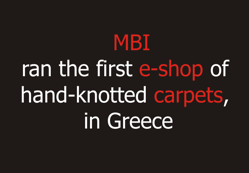 |
 |
 |

Rawar-Kerman 416 x 300
The handmade carpets' colors look different depending on the side you view the carpet from.This is because the pile of handmade carpets, in contrast to machine made carpets, is inclined so that the carpet has protection from dirt and wear. For a detailed view please click the images below.
The carpet has some small gaps in the pile next to the edge (not holes) and for this we are offering it at a special very low price. See the last photos.
The Persian carpets are an essential part of Persian art and culture and they among the most famous in the world.
Persian classic rugs are typically designed using one of four patterns: all-over, central medallion, compartment and one-sided.
For the more elaborate curvilinear designs, the patterns are carefully drawn to scale in the proper colours on graph paper. Each square thus becomes a knot, which allows for an accurate rendition of even the most complex design. Designs have changed little through centuries of weaving.
Classic Persian carpets are made on vertical looms. Vertical looms are undoubtedly more comfortable to operate. These are found more in city weavers and sedentary peoples because they are hard to dismantle and transport. There is no limit to the length of the carpet that can be woven on a vertical loom and there is no restriction to its width.Also the conditions of manufacture are such that allow more finer and perfect creations.
Two basic knots are used in most Persian Carpets and Oriental rugs: the symmetrical Turkish or Ghiordes knot (used in Turkey, the Caucasus, East Turkmenistan, and some Turkish and Kurdish areas of Iran), and the asymmetrical Persian or Senneh knot (Iran, India, Turkey, Pakistan, China, and Egypt).
The major classical centers of carpet production in Persia were in Tabriz, Kashan, Nain, Moud, Sarough, Bidjar, Ghom and Kerman.

 |
 |
 |